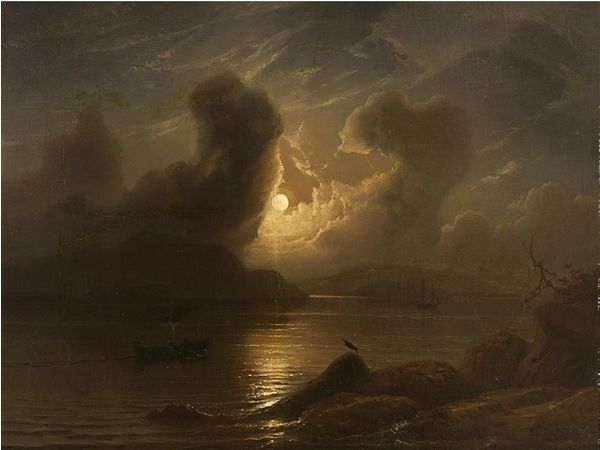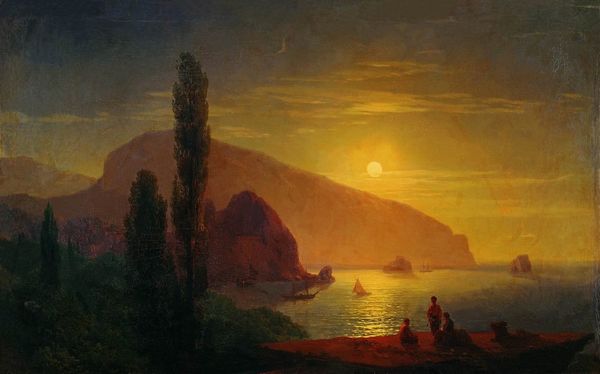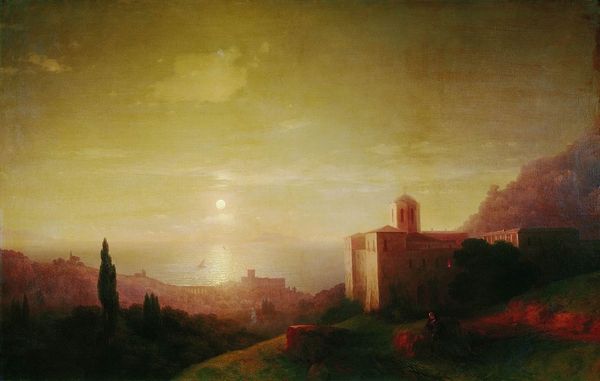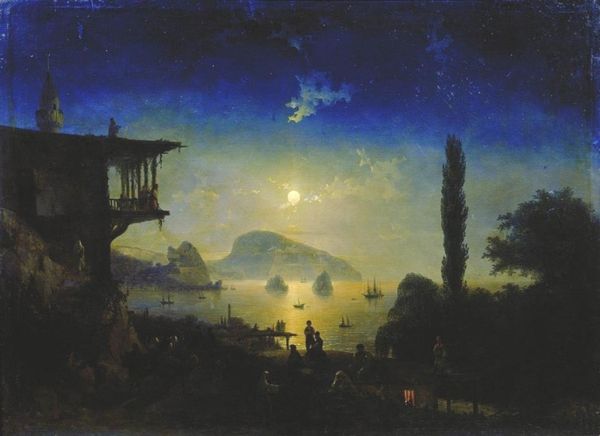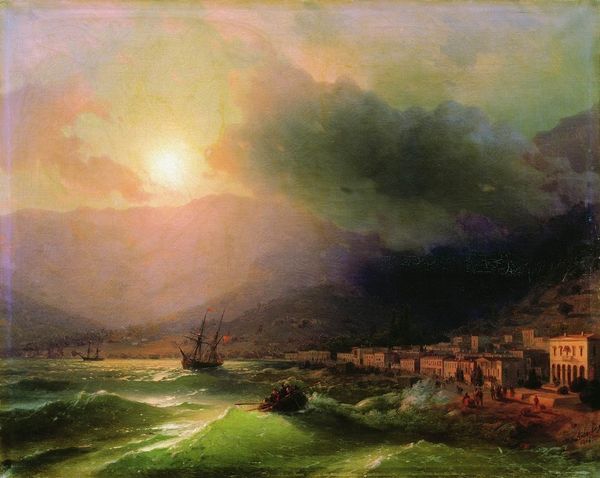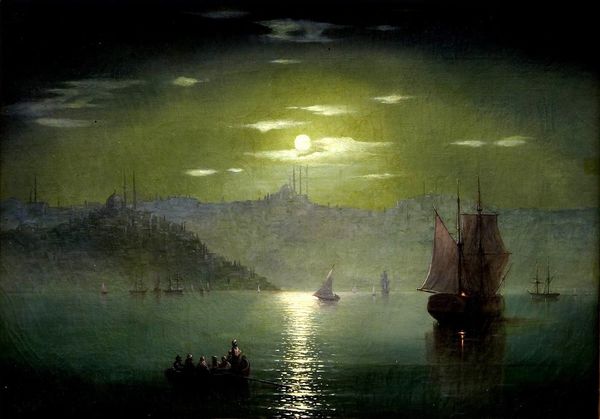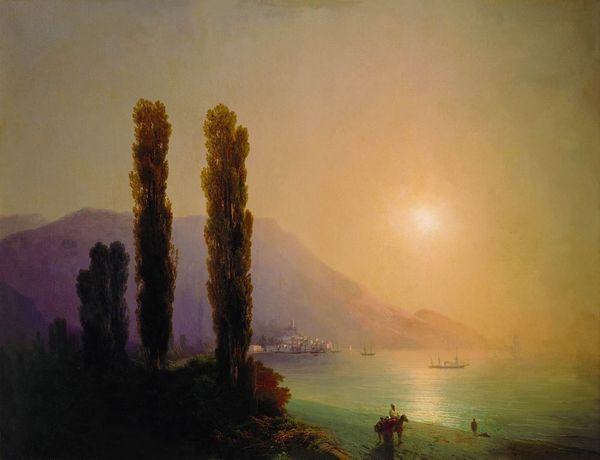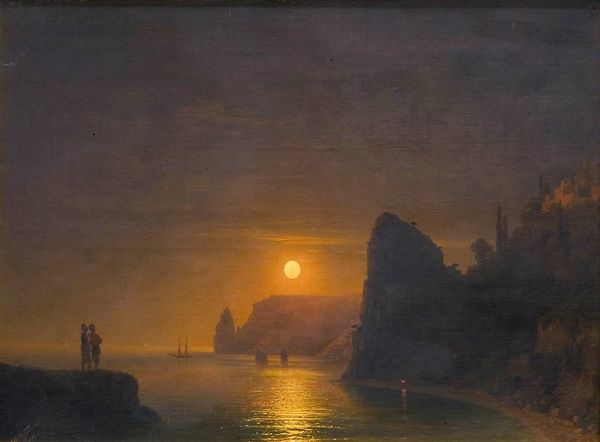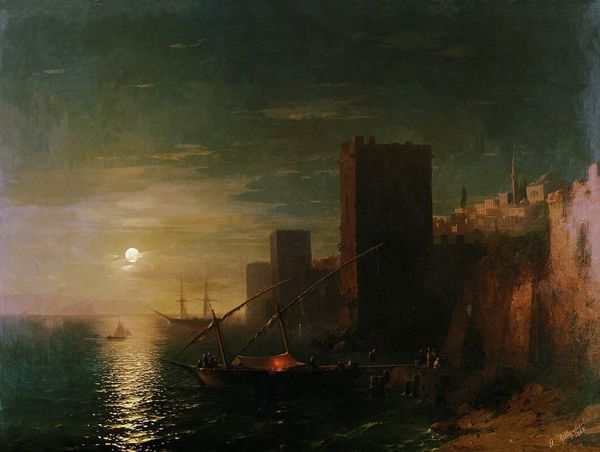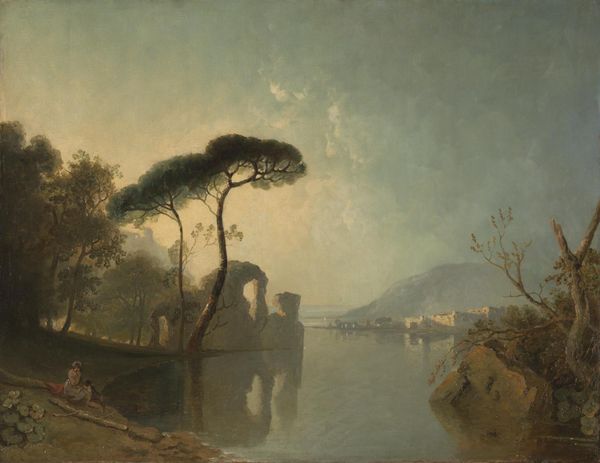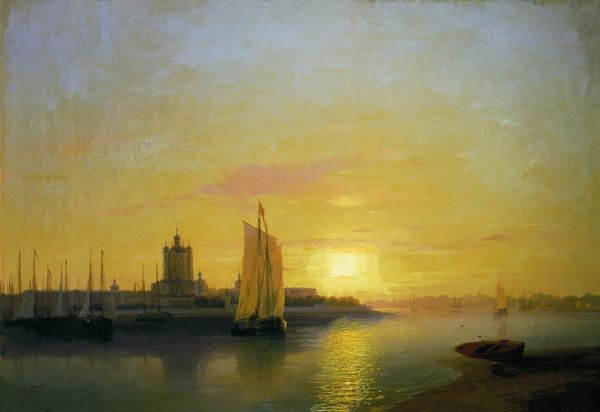
Night at the Rodos island 1850
0:00
0:00
ivankonstantinovichaivazovsky
Belarusian National Museum of Fine Arts, Minsk, Belarus
painting, oil-paint
#
night
#
tree
#
sky
#
painting
#
oil-paint
#
landscape
#
ocean
#
romanticism
#
fog
#
men
#
cityscape
#
nature
#
mist
#
sea
Copyright: Public domain
Curator: Let’s consider this striking seascape. It's Aivazovsky's "Night at the Rodos island", an oil-on-canvas work created in 1850, presently housed in the Belarusian National Museum of Fine Arts. Editor: Immediately, I'm struck by the luminous quality—a symphony of oranges and blues interwoven across the sky and water. There's a captivating dynamism in the composition, as if light itself is the subject. Curator: Indeed, the interplay of light and shadow is central. Aivazovsky was celebrated for his mastery in capturing atmospheric effects. Here, the light symbolizes divine presence. Note how the silhouettes of the city blend, almost dissolving, reinforcing that sense of awe. The dark, earthy foreground and palm trees also signify something akin to paradise, in an earthly sense. Editor: The structural division into thirds also gives the painting a unique energy, right? The architecture is a grounding horizontal feature between water and sky, while the two men introduce depth into the painting in the same visual line as the palm trees on the right. It seems meticulously calculated. Curator: Precisely. Those architectural details echo the cultural layers embedded within the scene. Rodos, a crossroads of civilizations, evokes antiquity. You can feel echoes of Greek, Roman, and Ottoman empires layered in that skyline, represented here only as fragments in the darkness. The overall affect evokes a sense of transience, history passing, empire fading. Editor: Yes, this effect underscores how all the compositional elements work towards communicating more than a mere image of nature, no? The materiality itself – the layers of paint mimicking fog and mist – also adds depth. There’s an engagement with the medium itself as meaning. Curator: Certainly, it’s an impressive rendering, filled with psychological weight. Consider the painting as a reflection of romantic themes prevalent at the time, such as emotional intensity and sublime encounters with nature. There’s almost a yearning for an idyllic past being expressed. Editor: Fascinating. It reminds us how crucial technique is to a message, imbuing pigment and canvas with conceptual significance beyond simple visual representation. Curator: Yes, it brings those hidden cultural landscapes and symbols into vivid life, so to speak. Editor: A vivid rendering, one that is both a technical accomplishment and historical insight.
Comments
No comments
Be the first to comment and join the conversation on the ultimate creative platform.

